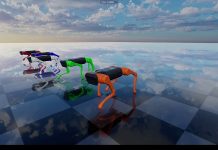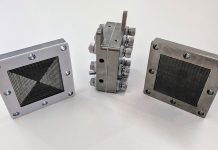
Scientists have discovered that colonies of gelatinous sea animals called salps swim in giant corkscrew shapes using a unique jet propulsion method.
This unusual way of moving could inspire new designs for underwater vehicles.
Salps, which look like jellyfish, take a nightly journey from deep ocean waters to the surface. Special cameras captured their coordinated swimming behavior during this migration.
Kelly Sutherland, a biology professor at the University of Oregon, led the research, describing it as “running a marathon every day using novel fluid mechanics.”
Salps are barrel-shaped macroplankton, more closely related to vertebrates like fish and humans than to jellyfish.
They can live alone or in colonies made up of hundreds of individuals linked in chains several meters long.
Alejandro Damian-Serrano, a biology professor, noted that salps have evolved in unique ways, losing some features while magnifying others. Solitary salps asexually produce a chain of clones that form a colony.
The researchers studied salps off the coast of Kailua-Kona, Hawaii, using specialized 3D cameras during both day and night dives.
They observed salps’ helical swimming techniques: shorter colonies spun around an axis, while longer chains buckled and coiled like a corkscrew.
Unlike microorganisms that swim using hair-like projections or tail whips, salps use jet propulsion. They contract muscle bands, similar to human throat muscles, to pump water through their bodies, creating thrust.
Individual jets contract at different times, allowing the colony to move smoothly without stopping. The jets’ angles also contribute to the spinning and coiling motion.
Sutherland described the salps’ motion as “snake-like and graceful,” with multiple units pulsing at different times to create a smooth, beautiful movement.
This discovery opens the door for engineers to design larger underwater robots inspired by salps. Such robots could be silent, less turbulent, and more fuel-efficient due to a multijet design.
Sutherland emphasized that this study raises more questions than it answers, such as the advantages of this swimming method and how many other organisms use similar techniques.
The research, published in Science Advances, involved scientists from various institutions and was supported by the Gordon and Betty Moore Foundation and the Office of Naval Research.
Understanding the efficient and graceful swimming of salps could lead to advancements in underwater vehicle design, making them more effective and environmentally friendly.



